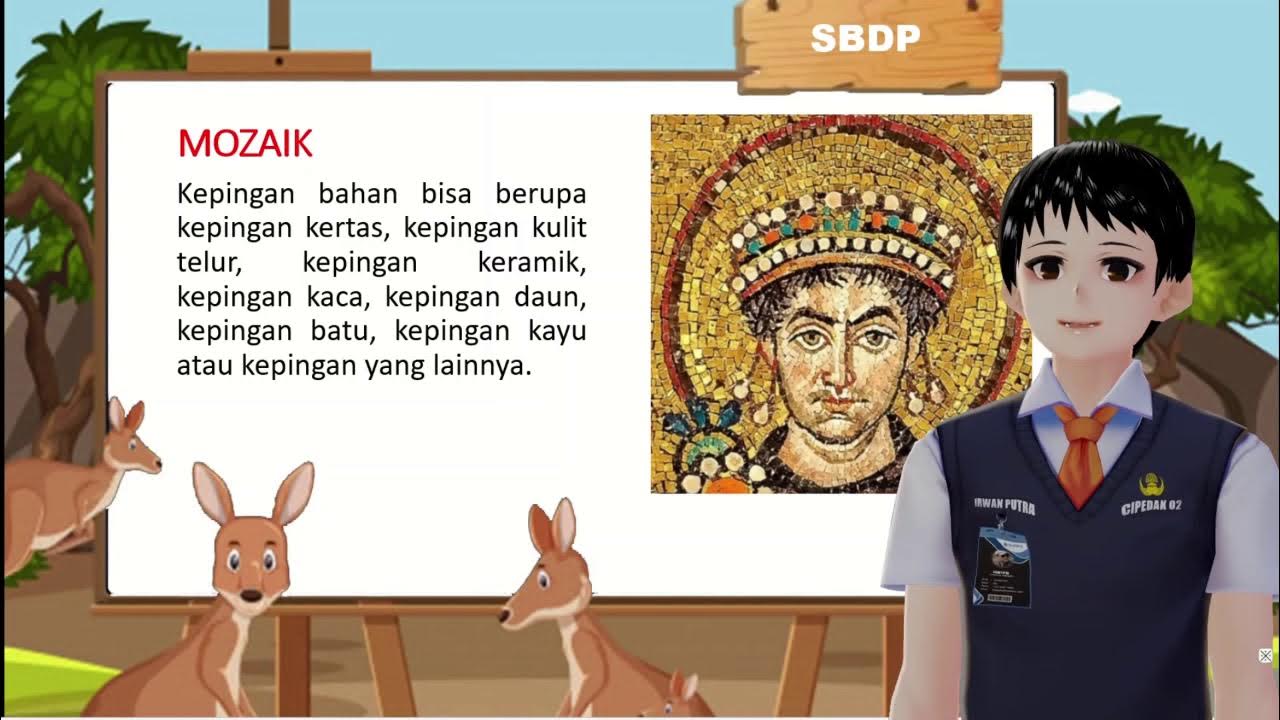Panoramica delle tecniche di decorazione principali in ceramica
Summary
TLDRThis video script provides a comprehensive exploration of various ceramic decoration techniques. The instructor delves into texturing on raw clay, underglazing, underglaze decoration, overglaze decoration, and third-fire decoration. Each technique is meticulously explained, accompanied by visual examples showcasing the intricate details and effects achieved. The instructor also offers valuable insights into the use of specific coloring agents, tools, and methods essential for each decoration style. With a wealth of knowledge shared, this script equips viewers with a solid understanding of ceramic decoration, enabling them to embark on their artistic journey armed with practical techniques.
Takeaways
- 🎨 Different ceramic decoration techniques including textures, engobes, underglaze, overglaze, and third firing were explained in detail.
- 🎻 Engobes are colored clay slips applied to unfired clay and act as a colored base layer.
- 🖼️ Underglaze decoration involves painting directly on the bisque-fired piece before applying a clear glaze over it.
- 🌈 Overglaze or majolica decoration is done by painting on top of an already glazed surface, requiring specific overglaze colors.
- 🔥 Third firing or china painting is done on the finished glazed piece by applying special colors that are fired again at a lower temperature.
- 🎨 Each technique requires specific types of colors - engobes use stains, underglaze/overglaze use ceramic decorating colors, and third firing uses china paints.
- 🖌️ Proper brushes and mediums are crucial for successful decoration, especially for overglaze and third firing techniques.
- 📘 Mastering ceramic decoration involves understanding color behavior, application methods, and when to use each technique.
- ✍️ Practice and guidance from experienced ceramists is recommended, particularly for more advanced techniques like overglaze and third firing.
- 🧪 Safety precautions should be taken when using certain ceramic colors and materials, referring to product labels.
Q & A
What are the main ceramic decorating techniques discussed in the transcript?
-The main ceramic decorating techniques discussed are texturing the raw clay, engobes (applying colored clay slips), underglaze decoration, overglaze decoration (majolica), and third-fire decoration.
What is the purpose of using engobes in ceramic decoration?
-Engobes, or colored clay slips, are used to coat the surface of a ceramic piece with a colored clay layer before firing. This allows for creating different colored surfaces and decorative effects.
What is the difference between underglaze and overglaze decoration?
-Underglaze decoration involves applying colored pigments or oxides directly onto the bisque-fired clay surface before applying a transparent glaze over it. Overglaze decoration, also known as majolica, involves painting on top of an already glazed surface.
Why is a white clay body preferred for underglaze and overglaze decoration?
-A white clay body is preferred because it provides a clean, blank canvas for the colored decorations to show up more vividly and accurately without being influenced by the underlying clay color.
What is the purpose of third-fire decoration?
-Third-fire decoration involves applying special low-fire ceramic colors and mediums onto a fully glazed and fired ceramic piece, requiring a third firing to fuse the colors onto the glazed surface.
What is the main challenge in overglaze (majolica) decoration?
-The main challenge in overglaze decoration is painting on the powdery, glazed surface, which requires a skilled hand, appropriate brushes with good reservoirs, and an understanding of how the colors will interact with the glaze during firing.
Can engobe decorations be removed or corrected if needed?
-Yes, engobe decorations can be relatively easily removed or corrected before firing if needed, as they are applied to the unfired clay body.
What is the recommended consistency for underglaze and overglaze colors?
-For underglaze and overglaze colors, it is recommended to mix them with water to a very fluid, diluted consistency for better application and control.
Can third-fire decorations be applied to functional ceramics intended for food use?
-Not all third-fire decorations are food-safe, so it is important to check the labels and avoid using any toxic colors or materials for functional ceramics intended for food use.
What is the purpose of applying a transparent glaze over textured or decorated ceramic pieces?
-Applying a transparent glaze over textured or decorated ceramic pieces serves to make the piece non-porous, waterproof, and durable, while still allowing the underlying decoration to show through.
Outlines

このセクションは有料ユーザー限定です。 アクセスするには、アップグレードをお願いします。
今すぐアップグレードMindmap

このセクションは有料ユーザー限定です。 アクセスするには、アップグレードをお願いします。
今すぐアップグレードKeywords

このセクションは有料ユーザー限定です。 アクセスするには、アップグレードをお願いします。
今すぐアップグレードHighlights

このセクションは有料ユーザー限定です。 アクセスするには、アップグレードをお願いします。
今すぐアップグレードTranscripts

このセクションは有料ユーザー限定です。 アクセスするには、アップグレードをお願いします。
今すぐアップグレード関連動画をさらに表示

La Ceramica per Principianti in meno di 10 MINUTI. Video Tutorial sulla Ceramica - SUPER FACILE!!!

Da argilla a ceramica - La trasformazione in cottura

Alumina Ceramics: The Complete Guide (2021 Update)

Proses Produksi Pembuatan Keramik di Pabrik Modern | Bagaimana Cara Pembuatan Keramik

Processo Produtivo Portobello

Kolase, Montase dan Mozaik Merupakan Bagian dari Karya Seni Tempel
5.0 / 5 (0 votes)
